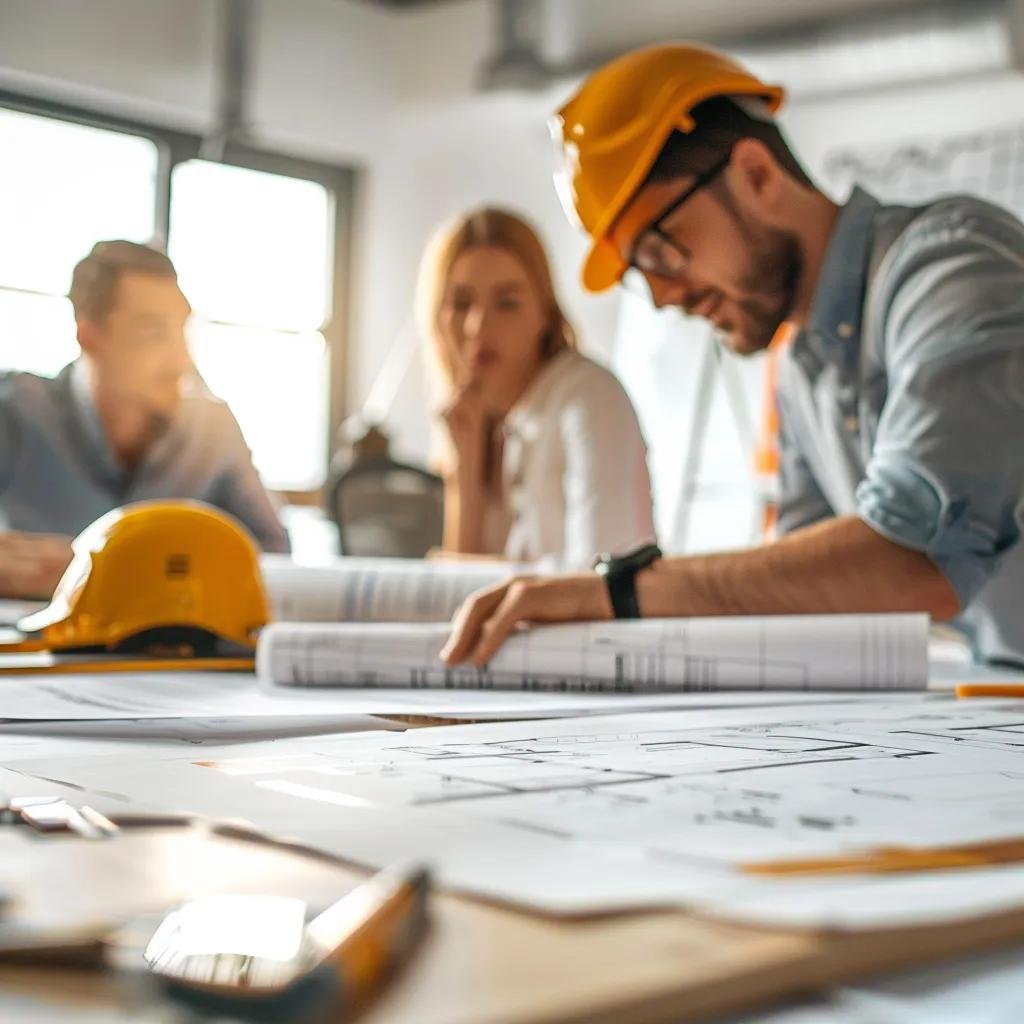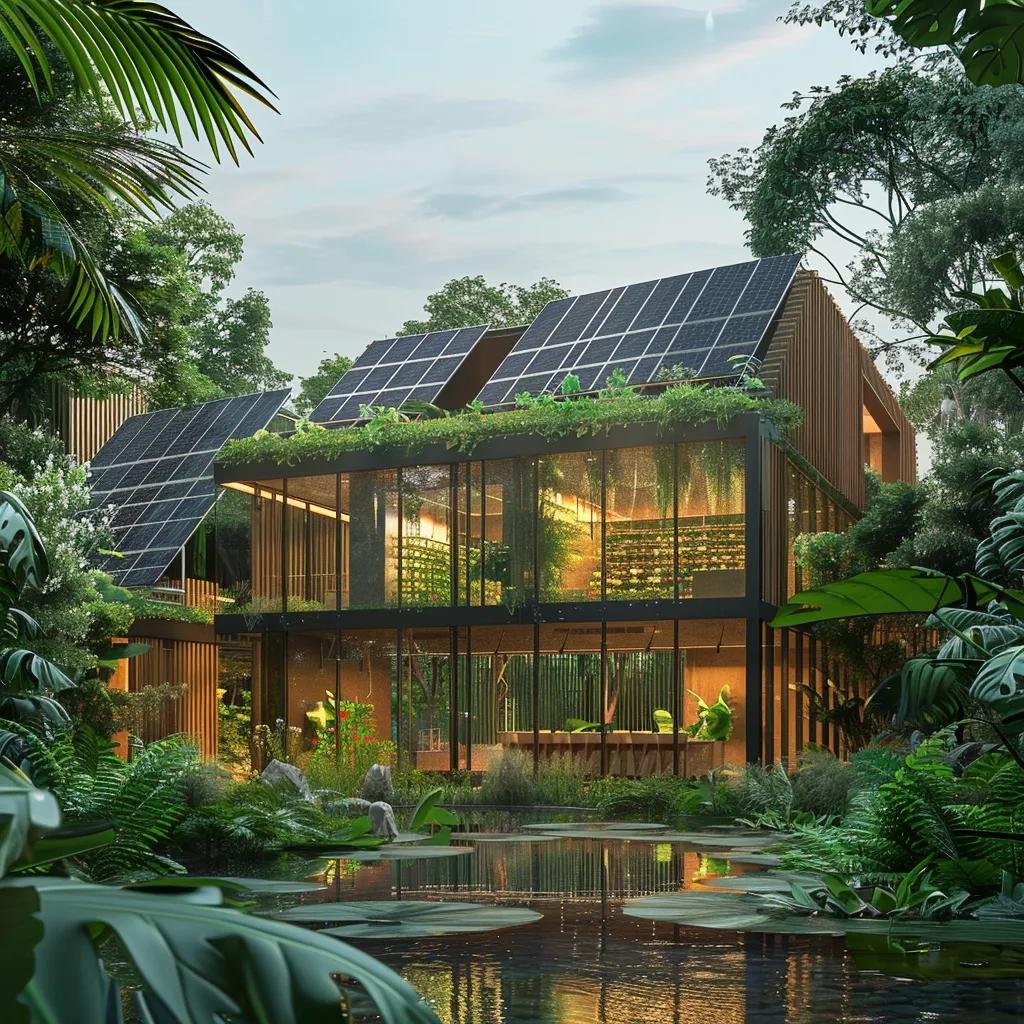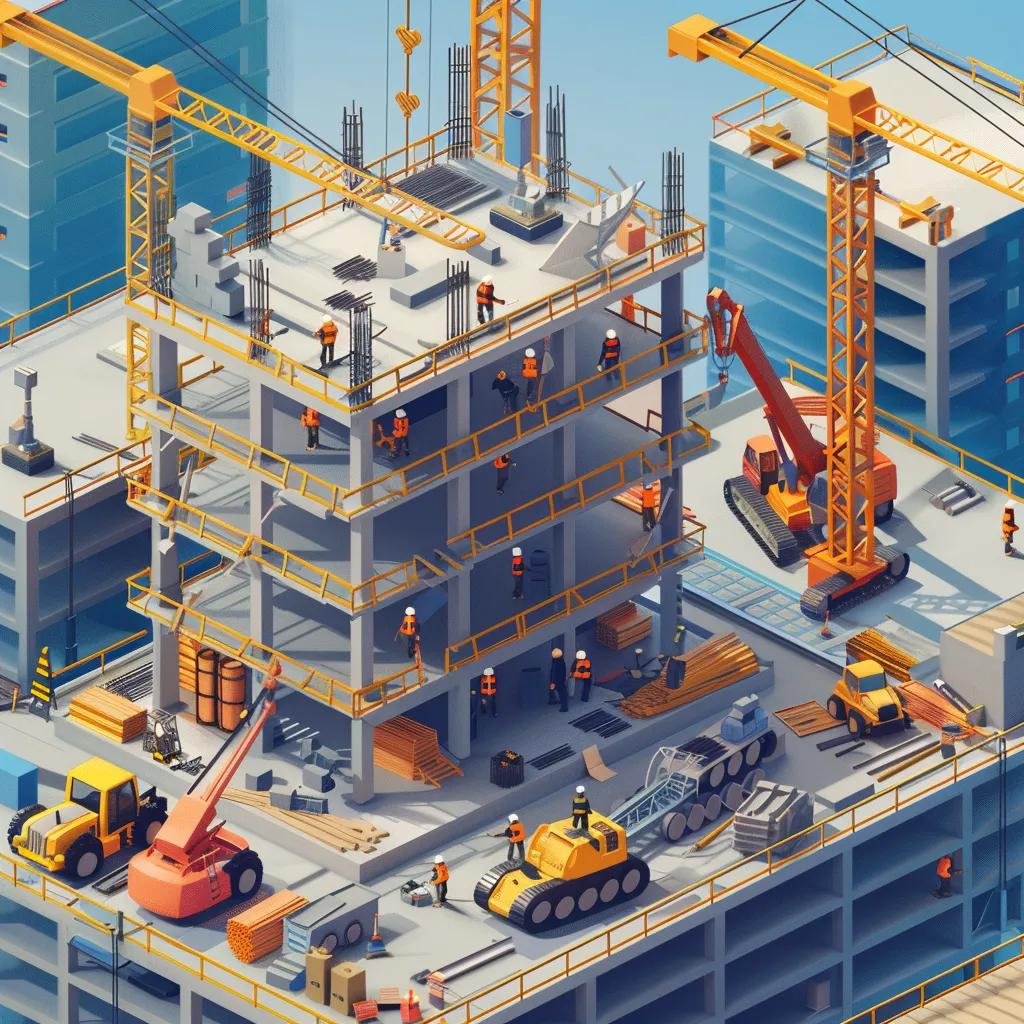Cost-Effective Commercial Construction Methods: A Business Owner’s Guide to Modern Building Savings
Commercial construction projects routinely face budget overruns and schedule delays, driving up life-cycle costs and eroding profit margins. This guide demonstrates how targeted strategies—ranging from pre-construction planning and value engineering to sustainable design and smart technologies—deliver measurable savings over time. Business owners will learn seven proven cost-reduction methods, each defined, explained, and illustrated with practical benefits. Along the way, Mastodon Marketing highlights how professional commercial and air duct cleaning services link to long-term efficiency and asset preservation.
In this guide, readers will explore:
- Strategic planning, budgeting, and lean construction practices for upfront savings.
- Value engineering stages that maximize ROI throughout a project’s life cycle.
- Sustainable building methods that cut energy and water expenses.
- Modular and prefabricated approaches for speed and lower labor costs.
- Smart building technologies that optimize HVAC performance and predictive maintenance.
- The critical role of professional commercial cleaning and air duct cleaning in reducing operational costs.
- Best practices in sourcing materials, managing labor shortages, and streamlining supply chains.
Optimizing Commercial Building Costs: 7 Proven Strategies
Strategic methods to reduce commercial construction costs focus on early decision-making, transparent budgets, and continuous waste elimination. By integrating thorough planning, risk controls, and lean principles, owners can avoid expensive change orders and idle labor. These techniques pave the way for value engineering, sustainable design, and modern methods that further compound savings.
How Does Strategic Planning and Pre-Construction Optimization Lower Expenses?
Strategic planning establishes project scope, schedule, and cost estimates before groundbreaking to prevent budget overruns. Early coordination of design, procurement, and permitting clarifies responsibilities and minimizes scope changes. For example, a detailed constructability review can reveal design conflicts that would otherwise cost thousands in delay penalties.
Key Planning Steps for Cost Control:
| Entity | Attribute | Value |
|---|---|---|
| Scope Definition | Level of Detail | 100% clarity on space requirements |
| Constructability Review | Issue Resolution Rate | 90% of design clashes identified early |
| Schedule Validation | Milestone Certainty | 95% on-time milestone achievement |
These proactive steps align teams and budgets, setting the stage for disciplined risk management and lean workflows.
Strategic Planning and Cost Control
Effective strategic planning in commercial construction involves detailed pre-construction planning to prevent budget overruns and minimize scope changes. Early coordination of design, procurement, and permitting clarifies responsibilities and minimizes scope changes, which is crucial for cost control.
This research supports the article’s emphasis on the importance of early planning and coordination in commercial construction projects.
What Role Does Budgeting and Risk Management Play in Cost Control?
Budgeting with contingency reserves and risk registers quantifies potential cost impacts before construction starts. A well-structured budget tags line items with risk probabilities, ensuring funds are available when unexpected issues arise. For instance, allocating a 5% reserve for site conditions can avert work stoppages due to hidden utility conflicts.
Key Risk Management Activities:
- Identify and categorize project risks through workshops led by cross-functional stakeholders.
- Assign probabilistic cost values to each risk and include them in the overall budget.
- Monitor risk triggers weekly to activate mitigation plans without delay.
By embedding risk controls into the budget, owners preserve capital and maintain schedule confidence.
How Can Lean Construction Principles Minimize Waste and Maximize Value?
Lean construction applies continuous improvement and pull planning to eliminate non-value-adding activities on site. Techniques like just-in-time deliveries and last-planner systems reduce material waste and crew downtime. For example, staggering concrete pours by demand prevents over-ordering and on-site spoilage.
Core Lean Construction Practices:
- Value-Stream Mapping to identify waste points in workflows.
- Pull-Planning Sessions to synchronize subcontractors’ tasks.
- Continuous Improvement Huddles to capture on-site efficiencies daily.
Together, these lean methods drive higher productivity and lower direct costs, forming a robust foundation for value engineering.
How Does Value Engineering Maximize ROI in Commercial Construction Projects?

Value engineering is a structured approach that analyzes building functions and costs to enhance performance while reducing life-cycle expenses. Owners and design teams collaborate to identify alternative materials, systems, or processes that deliver required functionality at lower cost.
What Is Value Engineering and How Does It Reduce Life-Cycle Costs?
Value engineering defines the relationship between a building’s function and its cost through Function Analysis Systems Technique (FAST). By questioning “What must this element do?” teams uncover lower-cost alternatives that maintain or improve performance. For example, substituting a stone veneer with high-performance fiber cement panels can achieve identical aesthetics at a 20% material cost saving.
Value Engineering and Life-Cycle Costs
Value engineering is a structured approach that analyzes building functions and costs to enhance performance while reducing life-cycle expenses. By questioning “What must this element do?” teams uncover lower-cost alternatives that maintain or improve performance, leading to significant savings over the project’s life cycle.
This citation reinforces the article’s discussion of value engineering as a method to reduce costs and maximize ROI in commercial construction.
What Are the Key Stages of Value Engineering in Construction?
Value engineering unfolds in five distinct stages that guide systematic cost optimization:
| Entity | Attribute | Value |
|---|---|---|
| Information Phase | Data Collection | Collect performance criteria and cost data |
| Function Analysis | FAST Diagrams | Map functions to cost drivers |
| Creative Phase | Alternative Ideas | Generate at least 10 substitution concepts |
| Evaluation Phase | Cost-Benefit Ratio | Rank alternatives by cost efficacy |
| Development Phase | Implementation Plan | Integrate approved alternatives into construction documents |
These stages ensure that cost savings endure across the project’s entire life cycle.
How Can Alternative Materials and Function Analysis Improve Project Value?
Alternative materials—such as recycled steel, low-emissivity glass, and composite decking—often outperform traditional options in durability and maintenance requirements. Function analysis pairs purpose statements with cost drivers to reveal when a premium material adds minimal functional benefit. For instance, specifying an insulated metal panel rather than conventional masonry can accelerate installation and reduce maintenance labor over time.
By aligning function, cost, and performance, owners extract maximal value from each specification.
What Are the Benefits of Sustainable Commercial Building Methods for Long-Term Savings?

Sustainable commercial building methods lower operating expenses and enhance occupant well-being through resource efficiency and healthier indoor environments. Owners realize payback from reduced utility consumption, extended equipment life, and fewer maintenance disruptions.
How Do Green Building Practices Reduce Energy and Water Costs?
Green building practices—such as high-performance insulation, daylight harvesting, and rainwater capture—cut energy use by up to 50% and water demand by 30%. Energy-efficient HVAC systems paired with occupancy sensors adjust supply based on use patterns, driving immediate savings. Rainwater reuse for landscaping eliminates potable water usage and reduces municipal fees.
What Is the Impact of Sustainable Materials on Building Performance?
Sustainable materials like low-VOC paints, recycled-content steel, and certified wood improve longevity and indoor environmental quality. These materials often carry warranties that guarantee performance, reducing repair and replacement costs. For instance, specifying recycled-content steel roof panels can extend service life by 25% while minimizing landfill waste.
How Does Sustainable Construction Improve Indoor Air Quality and Require Maintenance?
Sustainable frames and finishes enhance indoor air quality by reducing off-gassing of harmful chemicals. Improved air filtration and continuous airflow strategies preserve occupant health and lower absenteeism. However, these systems depend on clean ductwork and filters to maintain design performance. Engaging professional Air Duct Cleaning Services ensures optimal HVAC efficiency and prolongs equipment life.
Maintaining air quality through routine cleaning bridges construction efficiency with long-term operational savings.
How Do Modular and Prefabricated Construction Methods Save Time and Money?
Modular and prefabricated methods shift assembly work off-site into controlled factory settings, streamlining schedules, and reducing labor demands. By standardizing components, these approaches cut on-site waste and weather-related delays.
What Are the Cost Advantages of Modular Construction in Commercial Projects?
Modular construction reduces on-site labor by up to 30% and accelerates project delivery by as much as 50%. Factory workflows implement lean principles, resulting in less material waste and consistent quality control. Accelerated installation frees occupancy weeks or months earlier, shortening rent-and-interest costs.
How Does Prefabrication Accelerate Project Completion and Reduce Labor Costs?
Prefabrication of structural elements—such as HVAC racks, wall panels, and restroom pods—enables parallel site work. Site crews focus on foundations while modules are built off-site. This overlap slashes schedule duration and lowers peak labor rates, since factory labor is often more cost-effective than specialized trades on a volatile jobsite.
What Are the Common Types of Modular Construction Used Today?
Key modular typologies in commercial building include:
- Volumetric Modules: Fully enclosed units delivered complete.
- Panelized Systems: Wall, floor, and roof panels shipped for on-site assembly.
- Hybrid Approaches: Combining traditional framing with prefabricated components.
Hybrid approaches offer flexibility, blending familiar site processes with modular efficiencies to meet diverse project requirements.
How Can Smart Building Technologies Optimize Cost Control and Maintenance?
Smart building technologies integrate sensors, analytics, and automated controls to drive operational savings and extend equipment life. By monitoring performance in real time, facilities managers can anticipate issues before they escalate into costly downtime.
What Technologies Improve HVAC Efficiency and Energy Management?
IoT sensors and energy-management platforms adjust heating, cooling, and ventilation according to occupancy data and weather forecasts. Variable Frequency Drives (VFDs) on air handlers modulate fan speeds, cutting electricity draw by up to 40%. Smart meters track usage at the circuit level, pinpointing inefficiencies.
How Does Predictive Maintenance Reduce Operational Costs?
Predictive maintenance uses machine-learning algorithms to detect anomalies—such as vibration changes in motors or pressure drops in chillers—before failures occur. By scheduling service only when needed, owners avoid unnecessary routine checks and unplanned breakdowns, saving on labor and emergency parts.
How Does Air Duct Cleaning Enhance Smart Building HVAC Performance?
Clean air ducts improve airflow and heat transfer, reducing HVAC runtime by up to 15%. When sensors detect rising static pressure, a targeted cleaning cycle restores design parameters. Partnering with a local lead generator like Mastodon Marketing connects building owners to vetted Air Duct Cleaning Services that maintain sensor accuracy and system efficiency.
This integration of technology and cleaning extends equipment lifespan and lowers energy bills.
Why Is Professional Commercial Cleaning Essential for Long-Term Building Cost Reduction?
Professional commercial cleaning preserves asset value, promotes tenant satisfaction, and prevents deterioration that leads to high repair bills. Systematic cleaning programs—covering interiors, exteriors, and mechanical systems—safeguard building performance and health.
How Do Commercial Cleaning Services Preserve Asset Value and Tenant Satisfaction?
Regular floor care, window washing, and high-touch surface sanitization uphold a facility’s aesthetic and brand reputation. Well-maintained spaces enhance occupant comfort and productivity, reducing lease-turnover costs. For example, a monthly deep-clean schedule can extend carpeting life by 30% and minimize replacement expenditures.
What Are the Benefits of Regular Air Duct Cleaning for HVAC Efficiency?
Routine air duct cleaning removes dust, mold, and debris that impede airflow and compromise indoor air quality. Clean ducts reduce system strain, lower utility costs by up to 12%, and minimize health-related liability. Engaging certified Commercial Air Duct Cleaning ensures compliance with industry standards and maximizes HVAC ROI.
How Does Cleaning Contribute to Lower Maintenance and Operational Costs?
Proactive cleaning stops minor issues—like corrosion and biofilm buildup—from escalating into expensive repairs. A single annual comprehensive cleaning program can reduce unscheduled maintenance calls by 25% and extend equipment lifespans. These savings offset program costs and reinforce a building’s long-term financial sustainability.
What Are the Best Practices for Managing Labor and Material Costs in Commercial Construction?
Efficient procurement and workforce planning directly impact project budgets and schedule certainty. By sourcing competitively and optimizing crew deployment, owners control expenses without sacrificing quality.
How Can Sourcing Cost-Effective Building Materials Impact Project Budgets?
Bulk purchasing agreements, local supplier partnerships, and alternative material trials drive material-cost reductions. Evaluating supplier total-cost-of-ownership—including delivery fees, warranties, and lead times—helps choose economical options. For instance, sourcing recycled-content aggregate from local producers can lower material costs by 15% and shrink transport expenses.
What Strategies Help Address Labor Shortages and Reduce Workforce Expenses?
Cross-training multi-trade crews, using prefabricated assemblies, and partnering with local trade schools expand labor capacity and stabilize wage rates. Predictive scheduling software matches crew availability with project tasks, avoiding idle time and overtime premiums. These workforce strategies maintain productivity during peak demand.
How Does Supply Chain Management Influence Construction Cost Efficiency?
Real-time supply-chain visibility and vendor scorecards ensure on-time deliveries and quality compliance. By tracking order statuses and material certifications, owners prevent project stoppages and rework. Automated procurement platforms streamline purchase orders, reducing administrative overhead and securing early-order discounts.
Business owners who apply these cost-effective construction methods can achieve immediate savings and sustained operational efficiency. Strategic planning, value engineering, and sustainable design lay the groundwork for long-term value, while modular techniques and smart systems accelerate delivery and reduce life-cycle costs. Integrating professional commercial and air duct cleaning services ensures that efficiency gains persist, protecting asset value and supporting occupant health. To explore tailored cleaning-service lead generation or learn more about optimizing building performance, visit Mastodon Marketing’s Commercial Cleaning Services and Air Duct Cleaning Services.
Effective cost control in commercial construction demands an integrated approach. By combining advanced planning, material innovation, and continuous maintenance, businesses create buildings that deliver both upfront budget savings and enduring operational benefits. Partnering with experts in construction methods and facility care positions owners to thrive in competitive markets. Embracing these best practices secures a smarter, more profitable building portfolio.





